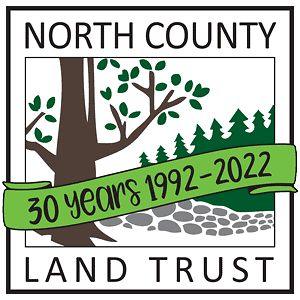 Originally delivered by Anna Wilkins, Executive Director for North County Land Trust at the North County Land Trust Virtual Annual Gathering, October 16, 2020.
Originally delivered by Anna Wilkins, Executive Director for North County Land Trust at the North County Land Trust Virtual Annual Gathering, October 16, 2020.
This is a strange Annual Gathering. We usually like to come together in person and celebrate the previous year’s accomplishments and to thank everyone who has made our progress possible.
Obviously, we can’t do that right now and ensure people’s safety. In fact, a very good friend of mine just tested positive for COVID yesterday, and while she’s feeling like she’s going to be able to get through it, she’s worried she’s not. These are the uncertainties that make us feel vulnerable. They make us feel isolated. They make us feel unsure of everything, really. What can we trust? And how can we get through this with our souls and our minds and our hearts intact?
One thing that I have relied on to help me through this whole pandemic time is my connection to nature. Don’t get me wrong, I regularly get completely overwhelmed and frustrated—young kids in hybrid school, husband trying to figure out how to teach hybrid-style high school, two puppies and a cat, all while giving everything I can to NCLT…
We’re all going through our own version of that. And it’s not just the pandemic that is heavy on my mind. With everything we know about climate change, about human rights, about the suffering of others locally, nationally and globally, the feeling of what we’d like to do to help versus what we CAN do, it almost feels unbearable.
But—WE—as humans, have been through this before. The earth and her inhabitants are resilient, because Nature evolved with uncertainty being the only certainty.
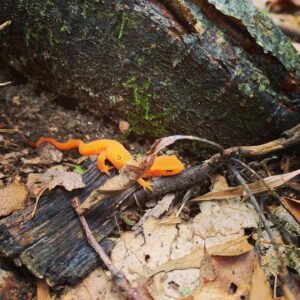
When I take a moment to step back, a moment to breathe, (take a walk), I often think about those people who I wish I could be with, face-to-face, wish I could embrace or just be in communion with—
But in that pause, I can reconnect with the understanding that we are held in the cradle of a natural system that has evolved with uncertainty as the underlying principle.
We all understand that we only have influence in the current moment. We can’t change the past and we can’t predict the future. The only thing we have is the NOW. But, as we move through this moment, we also must recognize the larger context that all these issues exist in. As we strive to do the most good with the time we are given, let our offering come from a place of understanding that solutions to all of the world’s problems must be based on the foundation of a healthy earth and a connection to those lands that support us.
If you want to do good for the world, do good for the planet.
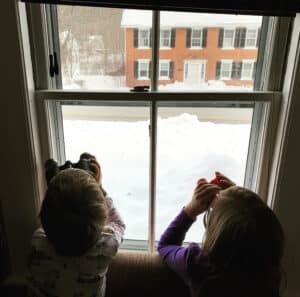
So how do we connect when can’t connect? How do we find that understanding?
Technology has helped us quite a bit. In February of last year, my team and I had started our Conservation Connections Workshops for Open Space committees and our landowner workshops—all part of our goal to promote understanding of conservation options and the idea of bringing the importance of land-base decisions to the fore. Re-adjusting all that to the digital format—especially for us “outdoorsy types” was a challenge. I’m so proud of my team for their flexibility during that time.
The positive side was that we saw more engagement in terms of numbers with about 200 people over the course of our offerings. Of course, the downside was that we weren’t able to make those face-to-face connections that are so important in our relationship-based work.
Digital connections (like this one) are just not the same. They actually take more effort!
Maybe that’s why we all feel so exhausted.
In Nature, matter and energy flow back and forth through systems. As the energy in a system diminishes, it slows down. Let’s remember to be patient with ourselves and others.
I wanted to talk about “resilience” today. I think what that means for us right now, amidst this ongoing storm, is being patient. Our impulse is to “right the ship”, to react to the challenges and changes that we’re going through. We need to understand there’s only so much “righting of the ship” that we can do amid the storm. And we may have to wait until whatever the disturbance is—whatever storm is raging in your mind—has subsided. The best thing we can do right now is to connect with others, draw up together and support one another so we can make the best long-lasting decisions for ourselves and for our communities.
And so, we continue our work, continue doing the best we can do with the now.
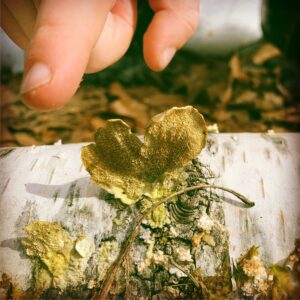
Sustaining the Good
It’s very exciting to me that our membership numbers and dollar contributions are increasing, and I want to keep that momentum going. I want to keep people excited and engaged so that we can continue building on that momentum to get people more engaged with the land we’re living on.
I’m also still looking to the future and asking, “What are our needs going to be in 50 years?” When I worked for the Lincoln Land Conservation Trust, (single town land trust outside of Boston) we were 60 years old as an organization, founded in 1957. Some of the first Conservation Restriction and first limited development projects in the state were done there in Lincoln, MA. So, as the Stewardship and Outreach and Engagement Coordinator, I was charged with continuing the conversation about these lands and the importance upholding the Conservation Restrictions 30, 40, 50 years out.
I have to say– I experienced the challenge in continuing that engagement with the citizens. People started saying, “Well, I’m the third-generation owner of this property and I want to cut those trees down for my addition. Why can’t I do that?” The ethics that had come from the original landowner and their connection and understanding of the Nature of their land had not necessarily been translated through the generations of landowners.
It made me realize that if we want to continue to protect the resources that we (and those who came before us) have already worked so hard to protect, there are larger questions. What is the community supporting? What do they need? What are they concerned about? What are they considering when they are making decisions? These are big questions. The answers are constantly changing and they are questions that can not be answered simply or by any one person or entity, because, as Nature tells us, none of us exists in isolation. However, we can’t assume that people are just going to understand what we’re trying to do—we need to make those connections, have those conversations, keep the issues that we know are crucial at the forefront and listen in return. We need to foster a culture of understanding that we are integrally connected to earth’s natural systems.
Changing a culture takes time. And it takes people with a shared vision.
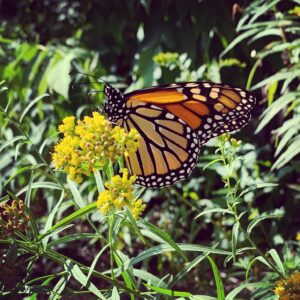
Ok– It takes a long time and a lot of people. That’s why I’m so incredibly excited that we’ve added Emily Merlino as our Stewardship Coordinator and Matt Emsley as our Director of Finance and Administration. Here at NCLT, all of these changes– decisions to grow, recruiting new board members, reaching out to new partners– are because we need more dedicated people who are willing to sacrifice their time and energy to help us build that culture of conservation that underlies all of the work that we’re doing, whether it’s land conservation, land stewardship, trails and maintenance, cultivating volunteers and engaging people on the land, our educational programs, building awareness of the importance of our place here on Earth, the natural systems we’ve worked hard to protect, and the decisions that we’re making about our region’s natural resources.
We need to continue those conversation, we need to bring more people in. And we need to understand that the land is what connects us more so than anything else. We ALL live here. We are ALL supported by the land that isn’t permanently developed. It doesn’t matter what political party you support, if you’re rich or poor, what your skin color is, if you’re disabled, suffering from mental or chronic illness– it doesn’t matter. Even if you never walk on the trails or even leave your house, the undeveloped land—forests, fields, farms, rivers, streams, lakes and ponds—is benefitting your health and well-being. I love that about land. It doesn’t matter who you are: Our work benefits all of us and the generations that will come after us.
We need to send that message out. We need a North County Land Trust army of people (that’s you), to band together to create a culture of conservation, to give people the language that they need to describe the benefits and the reasons that the work that we do and the land that we have is so important.
And to do this, we need to be patient, resilient. Remember this important lesson from Nature—everything is connected, nothing exists in isolation.
We must work together. As we do so, let’s resist the urge to separate ourselves and isolate ourselves from those we disagree with, from those we don’t understand, because even though we sometimes think the work they’re doing is separate from the work we’re doing, everything is connected. And we’re all in this together.
Thanks for coming- Be well and keep in touch.
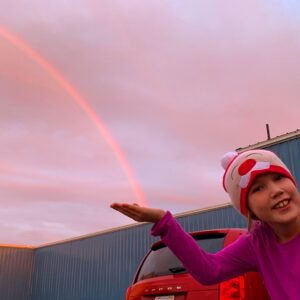
And if you are inspired to join us as a volunteer, monthly recurring or annual member, NCLT ambassador, program leader, trail steward, or sponsor, reach out and get involved. An investment in NCLT is an investment in a healthy future for all.
UPDATE: The friend with COVID referenced at the beginning of the text is doing well after quarantining at home with her family.
